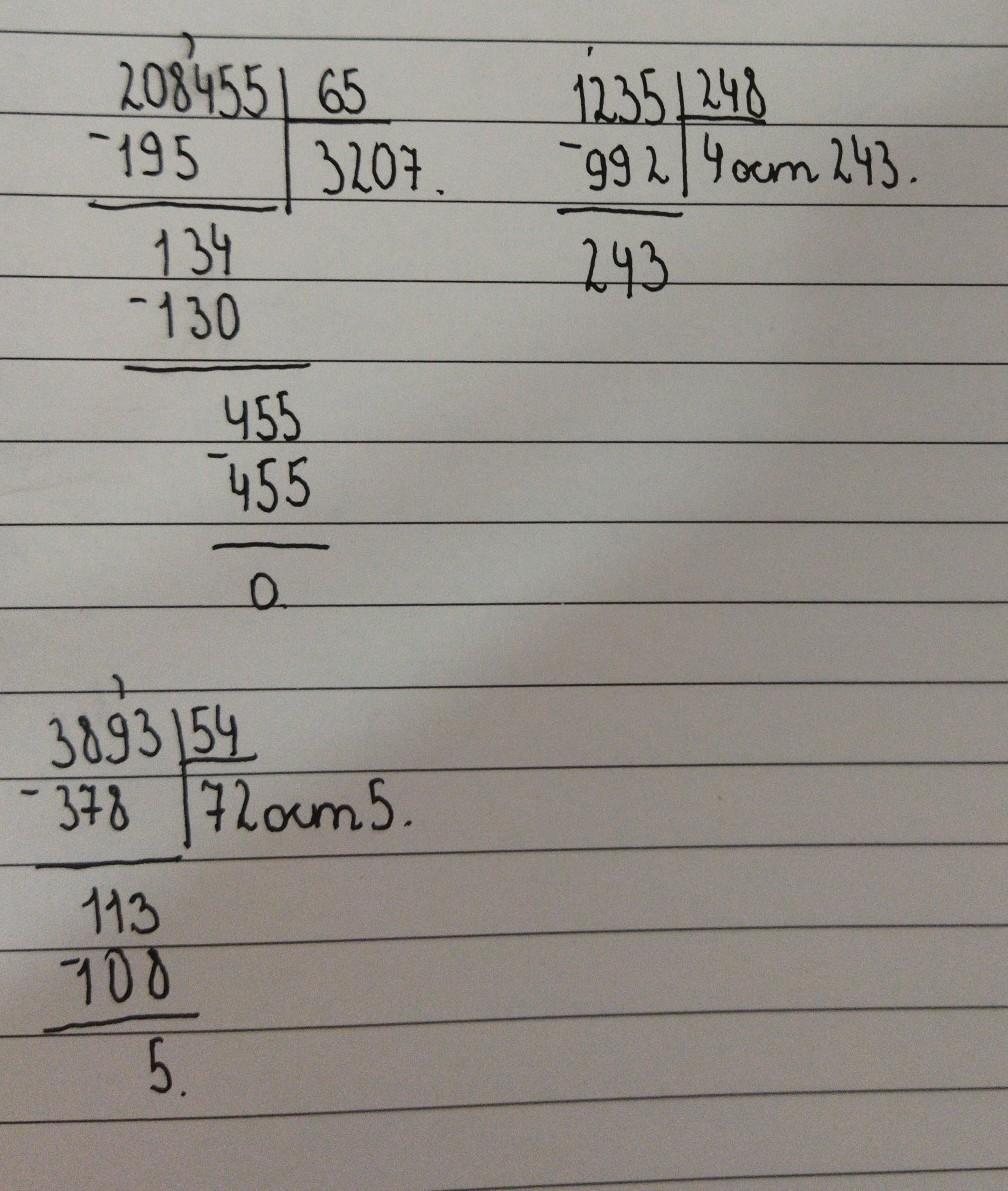Предмет: Математика,
автор: dileka055
1. Вычисли, записывая в столбик. [4]
208 455:65
2. Вычисли, записывая в столбик. [4]
1235 : 248
3. Выполни деление с остатком. [3]
3893:54
Помогите решить
Ответы
Автор ответа:
0
Ответ:
Вот так надо. Надеюсь всё понятно написала.
Приложения:

Похожие вопросы
Предмет: Литература,
автор: pomogimHe379
Предмет: Английский язык,
автор: kholodovk
Предмет: Математика,
автор: ruhka015031982
Предмет: Физика,
автор: milenrob
Предмет: Геометрия,
автор: Ризилька1820